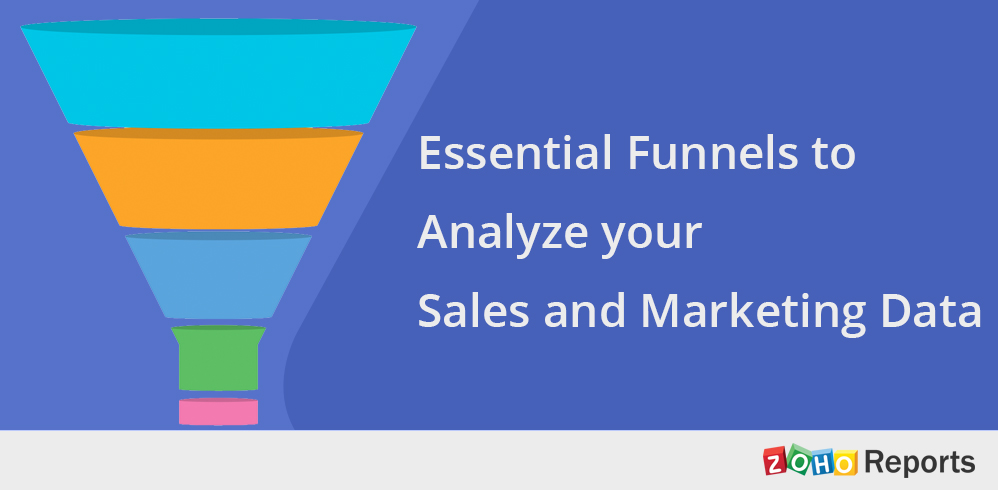In our previous posts on sales analytics (Sales Pipeline Optimization through Stage History Analysis & The Essential Sales Analytics Reports – Sales Team Analytics), we discussed how to make the most of your sales data using the Advanced Analytics Add-on for Zoho CRM/Salesforce. We are going to build on that with this post to highlight about some quintessential funnel charts to help you derive the best results out of your sales data.
A funnel chart is used to represent progressive flow; generally the reduction of a business metric across phases. Here are some of the funnels to help you analyze your sales data and up your sales game.
Leads to Deals Funnel:
The number of generated leads that are eventually converted into deals will form the first stage of any sales analysis. Say you wish to know the number of conversions at each stage – from leads to opportunities and from opportunities to wins. The funnel chart will capture that perfectly in an elegant and informative manner. And not just the conversion rate at each stage. You will also be able to measure the overall conversion rate from initial leads to final wins.
Stage History Analysis Funnel:
A Stage History Analysis funnel will help you easily visualize the flow of opportunities across the various stages. You can easily find the conversions across each stage, and also spot the stages where there are too many drop outs. If you find the stages where conversions are lacking, you can brainstorm to find out why and how to address them. You can then fine tune your sales process to bring about higher conversions.
There are two ways you can visualize the above information. One is to compare the value at each stage with the value of the previous stage. This will help you analyze at which particular stage there is a greater number of drop outs, and allow you to conceptualize ways of rectifying the same. This is depicted in the following funnel.
The other way of visualizing the above funnel is to compare each stage with the initial value. This will help you find the conversion level at each stage with respect to the initial value. You can identify which stage has the least number of conversions and hence needs the most attention to increase the final number of deals.
Stage Duration Analysis:
Now you can analyze and compare the stage history funnel along with a chart depicting the time spent at each stage. You will know which stage takes the most time, which stage takes the least, and if the most time-demanding stage is bearing the desired results or not. Depending on that, you can come up with the essential strategies to make optimal use of the time spent at each stage of the sales pipeline.
Revenue Opportunities Funnel:
Funnel charts can also be used to visualize the revenue opportunities flow. Starting with the overall revenue initially expected, to the final revenue accrued we can track the revenue possibility during the various stages of a sales pipeline. The revenue lost at each stage can be easily visualized. For stages where there is a steep loss of revenue when compared to the previous stage, you can come up with ways to remedy that.
Quotes to Invoices Funnel:
Keeping track of how many quotes were generated, how many sales orders were placed, and how many orders were completed can be a daunting task. Here is how a funnel chart simplifies your work, and helps you understand your order flow and its effective conversions.
The visualization and reporting capabilities of Zoho Reports do not end with funnel charts.. The Advanced Analytics Add-on for Zoho CRM and the Advanced Analytics Add-on for Salesforce CRM enable you to easily slice and dice your sales data and create compelling visualizations for effective sales and marketing analysis.
Want to try the Advanced Analytics Add-on?<a class="colorbox" href="http://»> Register below for a quick demo!

